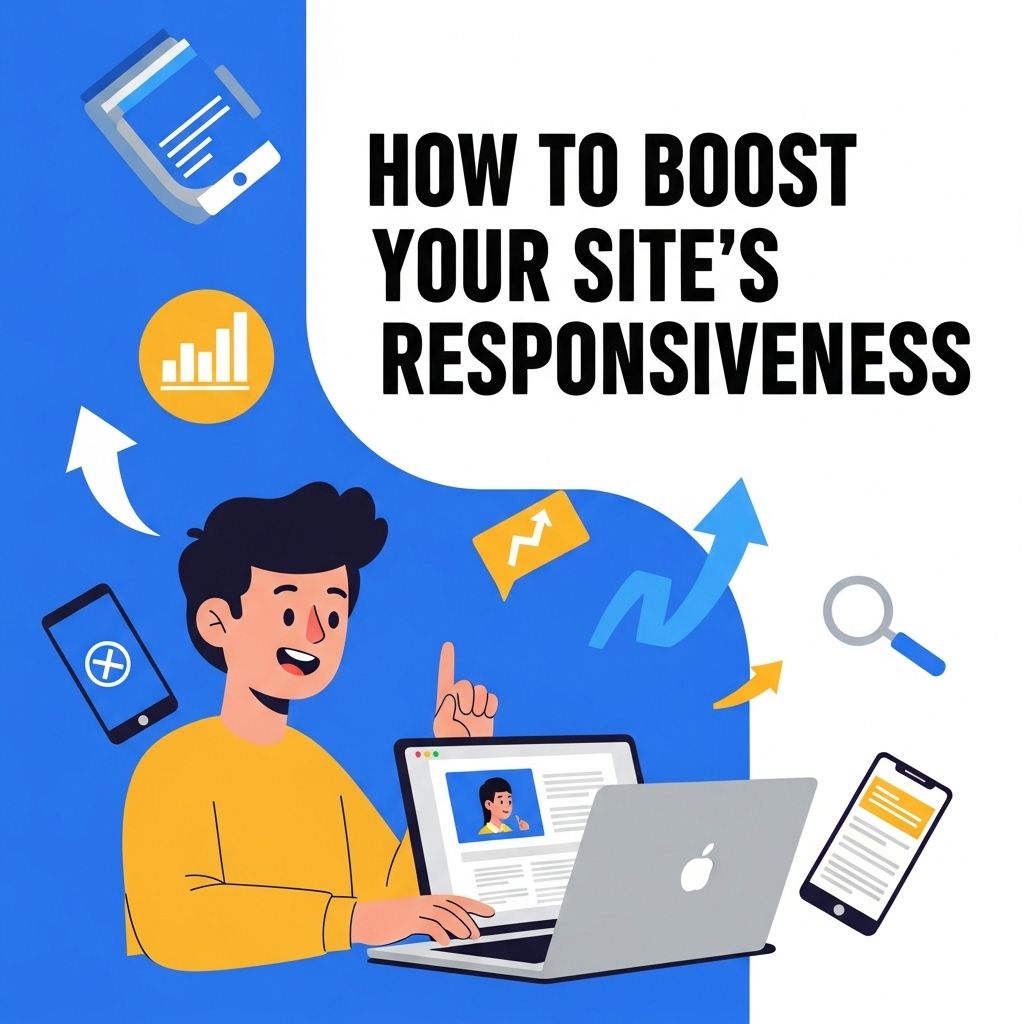In today’s fast-paced digital landscape, ensuring your website is responsive across various devices is critical for engaging users and enhancing their experience. As mobile traffic continues to surpass desktop usage, optimizing your site for responsiveness is no longer optional; it’s a necessity. In this article, we will explore key strategies and tools that can help you boost your site’s responsiveness, improve load times, and ultimately drive user satisfaction.
Understanding Responsiveness
Before diving into the specifics, it’s essential to clarify what responsiveness entails. A responsive website adapts seamlessly to different screen sizes and orientations, providing an optimal viewing experience. This means that whether a user accesses your site from a smartphone, tablet, or desktop, they will enjoy a consistent and user-friendly interface.
The Importance of Responsiveness
- Improved User Experience: Users are more likely to stay on your site if it is easy to navigate on their device.
- SEO Benefits: Search engines like Google favor responsive designs, which can lead to higher search rankings.
- Increased Conversion Rates: A well-optimized site often sees higher sales and leads.
Key Strategies for Boosting Responsiveness
1. Adopt a Mobile-First Approach
Designing for mobile devices first can simplify the process of creating a responsive site. This approach allows you to prioritize essential content and features, ensuring that they are accessible on smaller screens before expanding to larger devices.
2. Use Fluid Grid Layouts
Fluid grid layouts utilize relative units like percentages instead of fixed units like pixels. This enables your layout to adapt to any screen size. Here’s how to implement a fluid grid:
- Define a grid system with columns and rows.
- Use percentages for widths of elements.
- Adjust font sizes, paddings, and margins responsively.
3. Implement Media Queries
Media queries are essential in CSS for responsive design. They allow you to apply different styles based on device characteristics, such as width, height, resolution, and orientation. Here’s an example:
@media (max-width: 768px) { body { font-size: 14px; } .container { padding: 10px; }}4. Optimize Images and Media
Large images can slow down your website and negatively impact responsiveness. Optimize images by:
- Using appropriate file formats (WEBP, JPEG, PNG).
- Implementing responsive images with the
srcsetattribute. - Using CSS to define maximum widths.
5. Minimize Loading Times
Page load speed is crucial for a responsive site. Here are some tips to reduce loading time:
- Minify CSS, JavaScript, and HTML.
- Leverage browser caching.
- Use Content Delivery Networks (CDNs).
Tools for Testing Responsiveness
To ensure your site is truly responsive, utilizing testing tools can provide valuable insights. Here are some popular options:
| Tool | Description |
|---|---|
| Google Mobile-Friendly Test | Evaluates whether a page is mobile-friendly. |
| BrowserStack | Cross-browser testing tool that allows you to see how your site displays on different devices. |
| Responsinator | Shows how your website looks on various devices. |
Conclusion
Boosting your site’s responsiveness is an ongoing process that requires attention to detail, continual testing, and a commitment to improving user experience. By adopting a mobile-first approach, utilizing fluid grid layouts, optimizing media, and leveraging testing tools, you can create a website that not only meets the needs of your audience but also enhances your search engine visibility and conversion rates. As technology continues to evolve, staying ahead of the curve in responsive design will keep you at the forefront of the digital landscape.
FAQ
What is site responsiveness?
Site responsiveness refers to how well a website adapts to different screen sizes and devices, ensuring a seamless user experience on desktops, tablets, and smartphones.
Why is responsiveness important for my website?
Responsiveness is crucial because it improves user engagement, reduces bounce rates, and enhances SEO rankings, as search engines prioritize mobile-friendly sites.
What are some ways to improve my site’s responsiveness?
To enhance responsiveness, use a responsive design framework, optimize images, minify CSS and JavaScript, and implement flexible grid layouts.
How can I test my website’s responsiveness?
You can test your site’s responsiveness using online tools like Google’s Mobile-Friendly Test or by resizing your browser window and checking for layout issues.
What role does mobile optimization play in site responsiveness?
Mobile optimization is a key aspect of site responsiveness, ensuring that all elements of a website function well on mobile devices, improving user experience and satisfaction.




